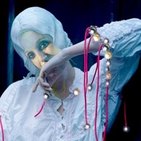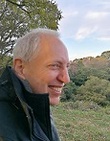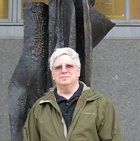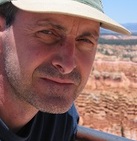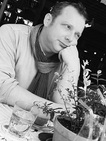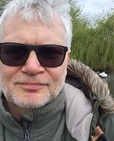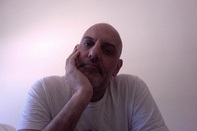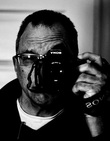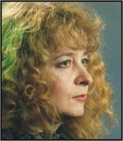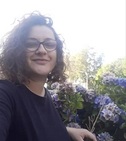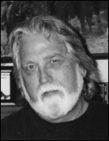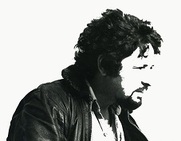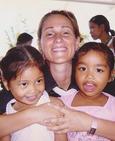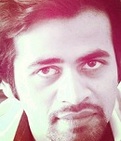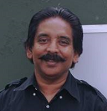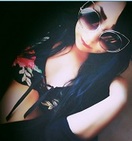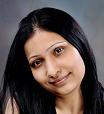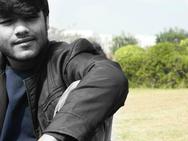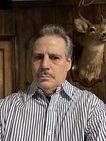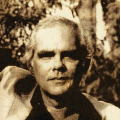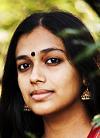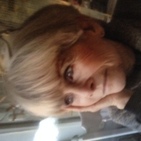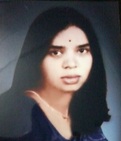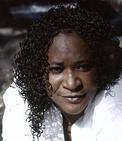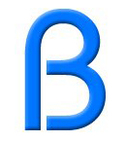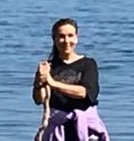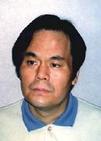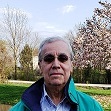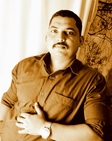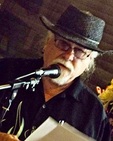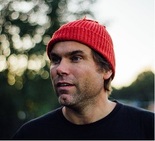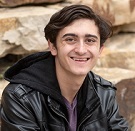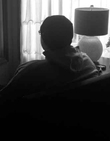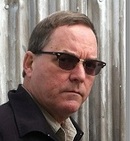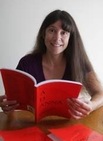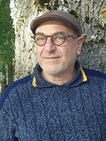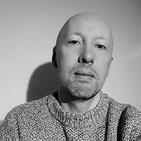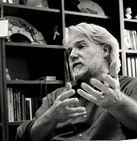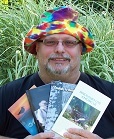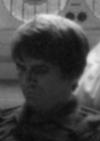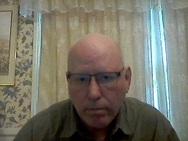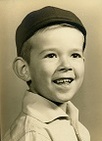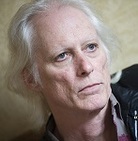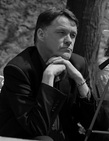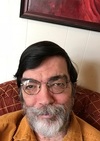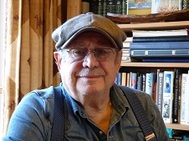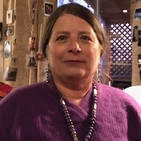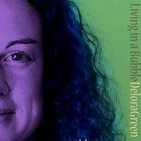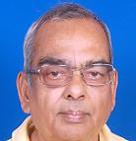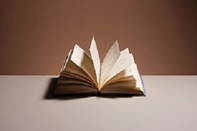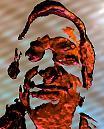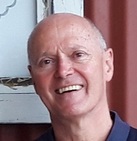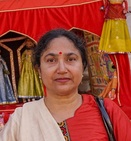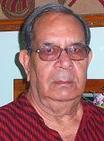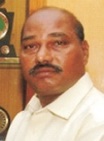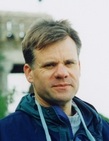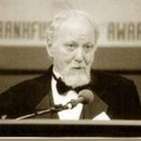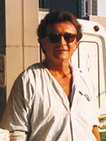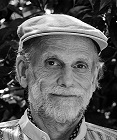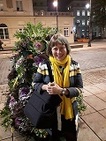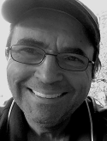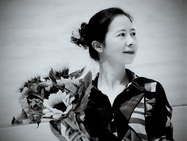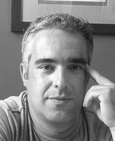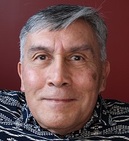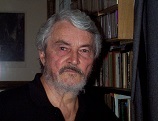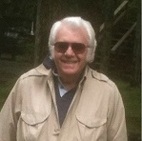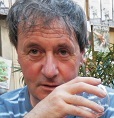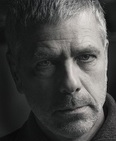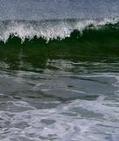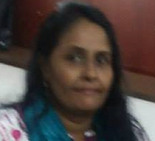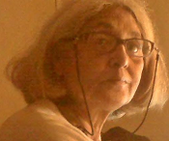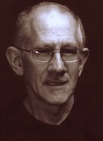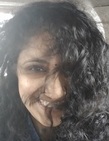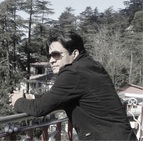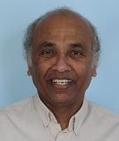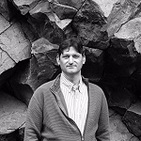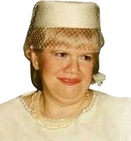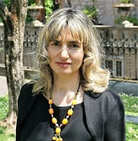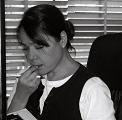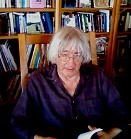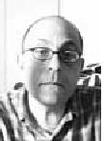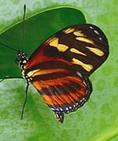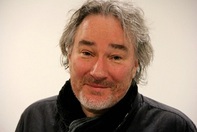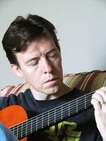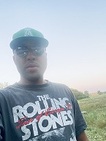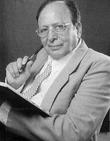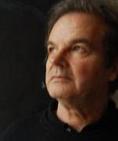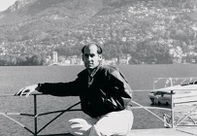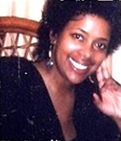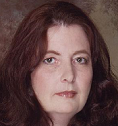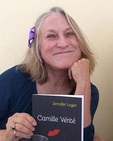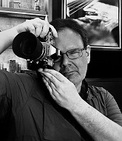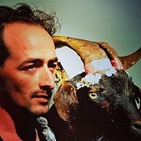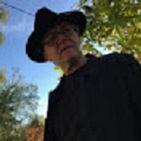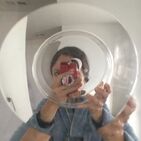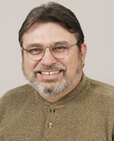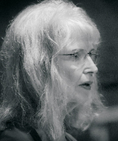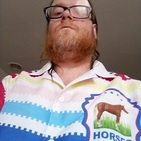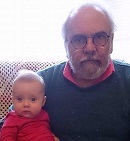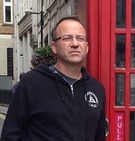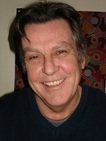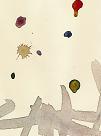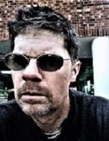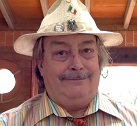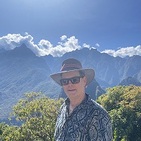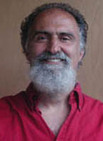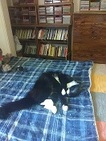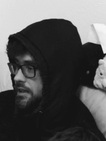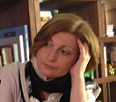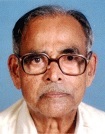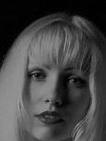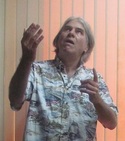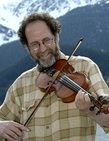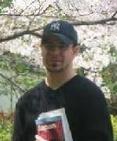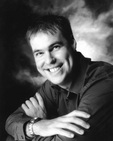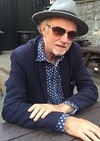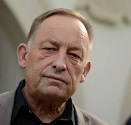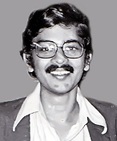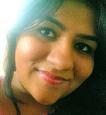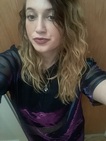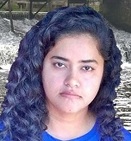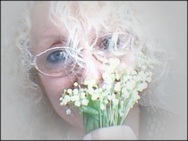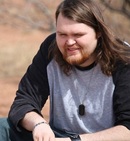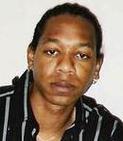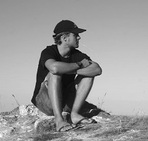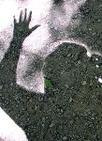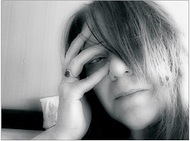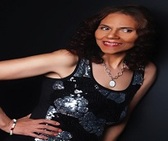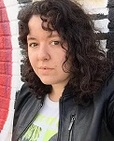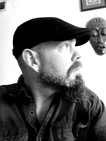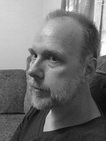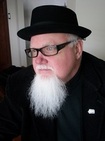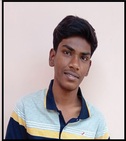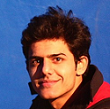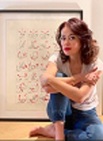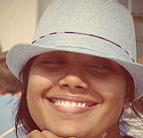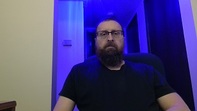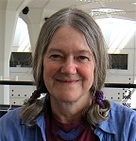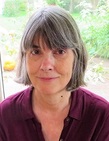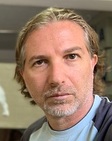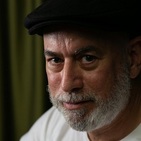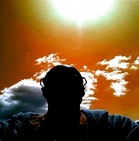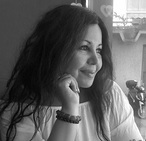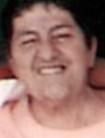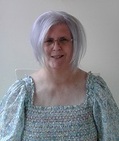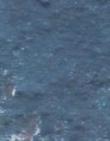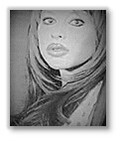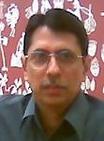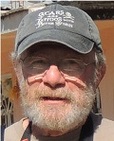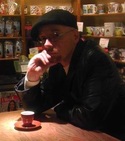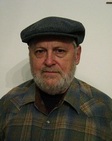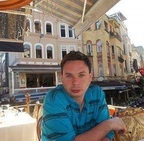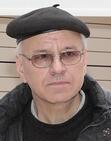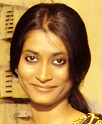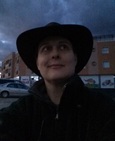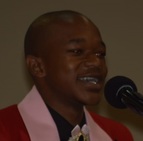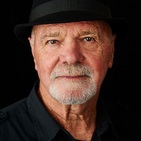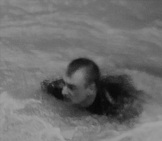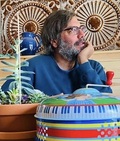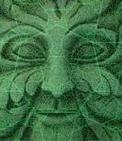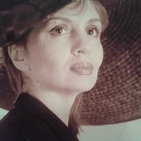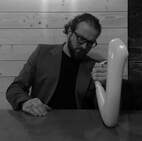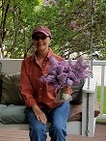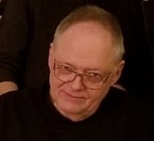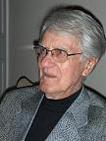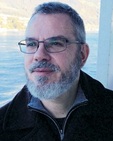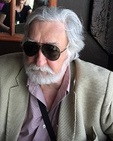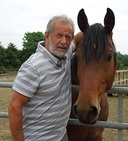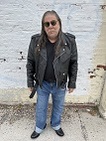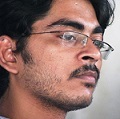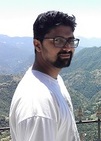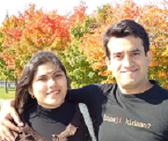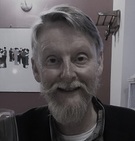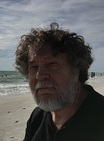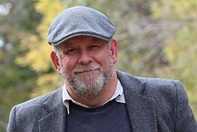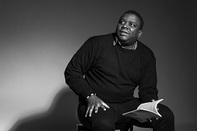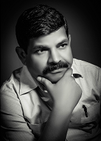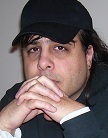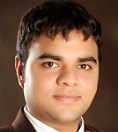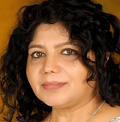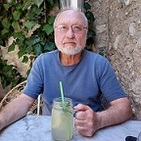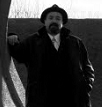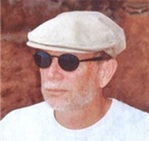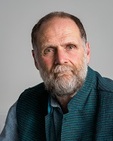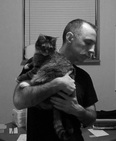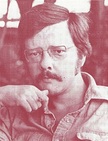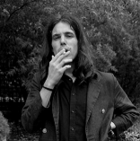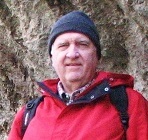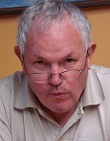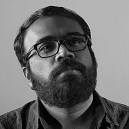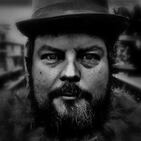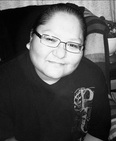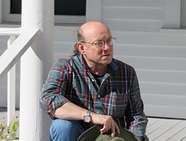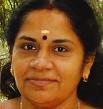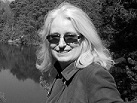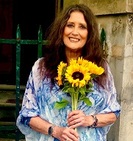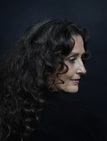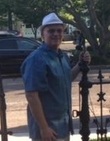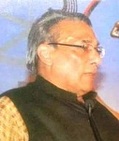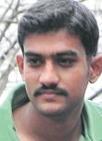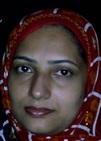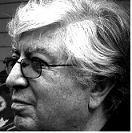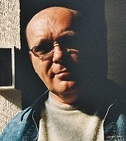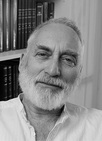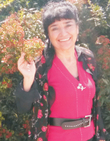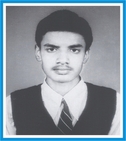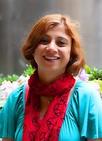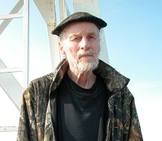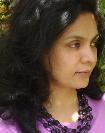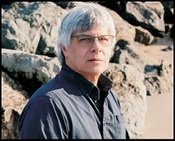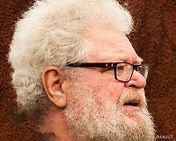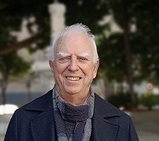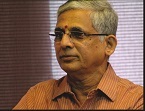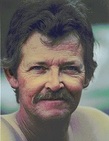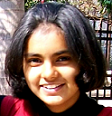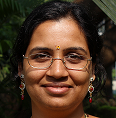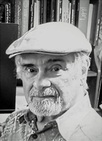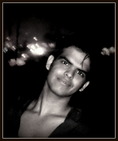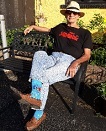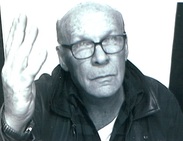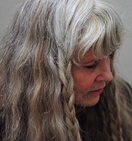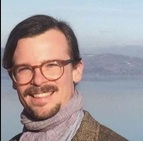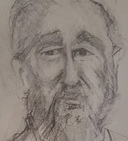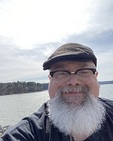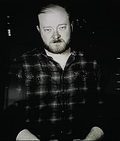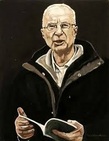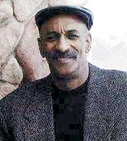Review of three black-white art photography books
| Review of three black-white art photography books |
EXTREME ART PHOTOGRAPHY FROM RUSSIA Review of three black-white art photography books by TheaterOfCrueltyNOH: including "Blades" (1998), "Sexus" (2000) and "Opus Transformations" (2006), published by "Magnitogorsk Press", Russia . All three books are quality special editions. The primary forces behind these publications are: AZsacra ZARATHUSTRA (esoteric philosopher, poet and extreme artist) and Jgor (Loki) PYATININ (photographer).
Zarathustra has briefly described his personal and artistic philosophy accordingly: "... the sensual basis of preciseness in the world. Animals, herbs, fish and birds also should have their own Gospel. In this case it is the Gospel of Birds of Prey. For example, my book "Mysterium" speaks about the clash of nature and humans, initial instincts and perpetual spirit. I am on the side of those who are doomed to die, but who still cast a challenge to the prevaricating world of suggested images. The perceived Prakriti should also conquer in the spiritual war against Purushi. The Spirit must not have an absolute right to victory! For me the pains of the broken flower and the silent shout of the crushed worm are more important than reaching Samadhi. I will always seek poetic revenge for their death." These are strong words from Zarathustra, who also has recently published four books of poetry: "Mysterium" (2006), "The Lotuses of Evil" (2008) " America : Invasion of the Heart" (2008), and "TAO KAMPF" (2008). Now that we have a vague idea of the philosophical sphere of AZsacra Zarathustra and the TheaterOfCrueltyNOH, let us take a look at that which really matters in this context: THE ART! Does it meet the expectations presented by the artists, and how does it function artistically? Let us review the art itself: the photographs possess an esoteric "sharpness" that is both clear and strong in presentation of image, but also soft and suggestive in technique, thus giving the public a sense of personal involvement that is visually non-abstract but experientially open-ended. Here the realm of possibility goes beyond that of fantasy. The photographic images in these books are theatrically stylized, but with an "edge" that both encaptures that which special subcultures in modern society accepted and / or embraced in the 1980s and 1990s: namely S&M sex, and surpasses it by combining the humanity of going beyond the boundaries of traditional sexual expression by way of incorporating innocence in humanity, flora, and "wild" fauna (otherwise perceived as "dangerous"). The instinct behind the photographs and in their execution is the same as the philosophical foundation expressed by AZsacra Zarathustra. Samadhi and personal perception in the here and now are more important than dreams of escape - perhaps because there is no escape from ourselves, and the realities and bondages that we ourselves create.
Art or pornography? There is actually (in my opinion) little that is sexually "pornographic" about the images in "Sexus", but the portrayal of humanity and the natural sense of humans as co-predators is rather disarming for the viewer and gives a new twist both to modern perceptions of crossing boundaries and the concept of "Art as pornography vs. Pornography as art". My conclusion: this is decidedly art, rather than porn. The sexual expression is merely one tool for showing an interplay between the many expressions of life and living creatures, ultimately resulting in the most esoteric and powerful usages possible of active and latent energies and the subconscious intellect: sexuality + spirit. The artistic and photographic choices in terms of poses, progression of photographic images, and scenography were sensibly employed and highly-effective in this case, as is the case of the two other black-white art photography books by these artists as well. If this work is to be regarded as extremely pornographic then I would suggest that the extremism is rather its honesty and its willingness to go beyond mere tabloidism and commercialized pornographic fantasy to a playful artistic expression.
And then there is "Opus Transformations" - which is, in my opinion, the most aesthetically-beautiful of the three art photography books reviewed here. These photos are less "grainy" than those in "Sexus" and "Blades" but here - again - the artistic decisions have been well thought through and executed. This is a very sophisticated presentation which is a further exploration of the themes of the earlier books but on a much more "refined" level. This is visible in the composition, lighting, contrasts and reproduction quality. In reviewing these books, I have gone back and forth with wondering if the artists might experiment a little more in the direction of techniques used by Herb Ritts in his art photography book entitled "Duo", from 1991. However, when I study "Opus Transformations" in depth I see that the artists have quite intentionally modernized the classical artistic photo-perfect technique in ways that accentuate the stark beauty of the subject matter in a new context, and which are complementary to the philosophical foundation of AZsacra Zarathustra and the TheaterOfCrueltyNOH. There are all too many strong photographs here to mention in this short piece, but the cover photo (featuring a child carrying a cage with a large rodent) is quite exquisite and quietly dramatic. Another incredible photograph is a portrait of Zarathustra with a pistol in his mouth, and surrounded by two beautiful women ... one whispering into his ear and the other listening and silently taking in the experience. The photograph creates a sense of both mystery and predatory predicament turned onto itself. All in all, the art photography in these books is very active. Is it provoking? Yes, but for quite different reasons than one might think at first glance. AZsacra Zarathustra, the TheaterOfCrueltyNOH and the talented photographer Jgor Pyatinin (Loki) create beautiful, active poetry in their art photography. Here there is no need to compare each photograph with a thousand words. Many of these photos go far deeper into the subconscious than even several thousand words could adequately express. -- criticism by Adam Donaldson Powell, 2008. Adam Donaldson Powell ( Norway ) is a multilingual author and a literary critic, writing in English, Spanish, French and Norwegian; and a visual artist. He has published several collections of poetry, essays, novellas and short stories: in the USA , Norway and India , as well as art photography criticism and literary criticism in publications (both print and electronic) based in the Americas , Europe and Asia . He has previously authored theatrical works performed on-stage, and he has (to date) read his poetry at venues in New York City ( USA ), Oslo ( Norway ), Buenos Aires ( Argentina ), and Kathmandu ( Nepal ).
|
Authors
Keep in touch
Review of three black-white art photography books
| Review of three black-white art photography books |
EXTREME ART PHOTOGRAPHY FROM RUSSIA Review of three black-white art photography books by TheaterOfCrueltyNOH: including "Blades" (1998), "Sexus" (2000) and "Opus Transformations" (2006), published by "Magnitogorsk Press", Russia . All three books are quality special editions. The primary forces behind these publications are: AZsacra ZARATHUSTRA (esoteric philosopher, poet and extreme artist) and Jgor (Loki) PYATININ (photographer).
Zarathustra has briefly described his personal and artistic philosophy accordingly: "... the sensual basis of preciseness in the world. Animals, herbs, fish and birds also should have their own Gospel. In this case it is the Gospel of Birds of Prey. For example, my book "Mysterium" speaks about the clash of nature and humans, initial instincts and perpetual spirit. I am on the side of those who are doomed to die, but who still cast a challenge to the prevaricating world of suggested images. The perceived Prakriti should also conquer in the spiritual war against Purushi. The Spirit must not have an absolute right to victory! For me the pains of the broken flower and the silent shout of the crushed worm are more important than reaching Samadhi. I will always seek poetic revenge for their death." These are strong words from Zarathustra, who also has recently published four books of poetry: "Mysterium" (2006), "The Lotuses of Evil" (2008) " America : Invasion of the Heart" (2008), and "TAO KAMPF" (2008). Now that we have a vague idea of the philosophical sphere of AZsacra Zarathustra and the TheaterOfCrueltyNOH, let us take a look at that which really matters in this context: THE ART! Does it meet the expectations presented by the artists, and how does it function artistically? Let us review the art itself: the photographs possess an esoteric "sharpness" that is both clear and strong in presentation of image, but also soft and suggestive in technique, thus giving the public a sense of personal involvement that is visually non-abstract but experientially open-ended. Here the realm of possibility goes beyond that of fantasy. The photographic images in these books are theatrically stylized, but with an "edge" that both encaptures that which special subcultures in modern society accepted and / or embraced in the 1980s and 1990s: namely S&M sex, and surpasses it by combining the humanity of going beyond the boundaries of traditional sexual expression by way of incorporating innocence in humanity, flora, and "wild" fauna (otherwise perceived as "dangerous"). The instinct behind the photographs and in their execution is the same as the philosophical foundation expressed by AZsacra Zarathustra. Samadhi and personal perception in the here and now are more important than dreams of escape - perhaps because there is no escape from ourselves, and the realities and bondages that we ourselves create.
Art or pornography? There is actually (in my opinion) little that is sexually "pornographic" about the images in "Sexus", but the portrayal of humanity and the natural sense of humans as co-predators is rather disarming for the viewer and gives a new twist both to modern perceptions of crossing boundaries and the concept of "Art as pornography vs. Pornography as art". My conclusion: this is decidedly art, rather than porn. The sexual expression is merely one tool for showing an interplay between the many expressions of life and living creatures, ultimately resulting in the most esoteric and powerful usages possible of active and latent energies and the subconscious intellect: sexuality + spirit. The artistic and photographic choices in terms of poses, progression of photographic images, and scenography were sensibly employed and highly-effective in this case, as is the case of the two other black-white art photography books by these artists as well. If this work is to be regarded as extremely pornographic then I would suggest that the extremism is rather its honesty and its willingness to go beyond mere tabloidism and commercialized pornographic fantasy to a playful artistic expression.
And then there is "Opus Transformations" - which is, in my opinion, the most aesthetically-beautiful of the three art photography books reviewed here. These photos are less "grainy" than those in "Sexus" and "Blades" but here - again - the artistic decisions have been well thought through and executed. This is a very sophisticated presentation which is a further exploration of the themes of the earlier books but on a much more "refined" level. This is visible in the composition, lighting, contrasts and reproduction quality. In reviewing these books, I have gone back and forth with wondering if the artists might experiment a little more in the direction of techniques used by Herb Ritts in his art photography book entitled "Duo", from 1991. However, when I study "Opus Transformations" in depth I see that the artists have quite intentionally modernized the classical artistic photo-perfect technique in ways that accentuate the stark beauty of the subject matter in a new context, and which are complementary to the philosophical foundation of AZsacra Zarathustra and the TheaterOfCrueltyNOH. There are all too many strong photographs here to mention in this short piece, but the cover photo (featuring a child carrying a cage with a large rodent) is quite exquisite and quietly dramatic. Another incredible photograph is a portrait of Zarathustra with a pistol in his mouth, and surrounded by two beautiful women ... one whispering into his ear and the other listening and silently taking in the experience. The photograph creates a sense of both mystery and predatory predicament turned onto itself. All in all, the art photography in these books is very active. Is it provoking? Yes, but for quite different reasons than one might think at first glance. AZsacra Zarathustra, the TheaterOfCrueltyNOH and the talented photographer Jgor Pyatinin (Loki) create beautiful, active poetry in their art photography. Here there is no need to compare each photograph with a thousand words. Many of these photos go far deeper into the subconscious than even several thousand words could adequately express. -- criticism by Adam Donaldson Powell, 2008. Adam Donaldson Powell ( Norway ) is a multilingual author and a literary critic, writing in English, Spanish, French and Norwegian; and a visual artist. He has published several collections of poetry, essays, novellas and short stories: in the USA , Norway and India , as well as art photography criticism and literary criticism in publications (both print and electronic) based in the Americas , Europe and Asia . He has previously authored theatrical works performed on-stage, and he has (to date) read his poetry at venues in New York City ( USA ), Oslo ( Norway ), Buenos Aires ( Argentina ), and Kathmandu ( Nepal ).
|

 Items in cart - View Cart
Items in cart - View Cart  One cannot solely comment on the excellent photography by Jgor Pyatinin (Loki) in these books. The conceptual work and direction by AZsacra Zarathustra is a crucial and integral element in the artistic expression, and the final results. AZsacra Zarathustra describes himself as an "esoteric philosopher, poet and meta extreme artist, as well as a Master of Death and Emperor of Suicide". That is a strong definition which inspires both curiosity, and a desire for critics and the public to put to the test both the degree of extremism and its artistic value beyond self-promotion. According to AZsacra Zarathustra, TheaterOfCrueltyNOH is an aesthetic and philosophical synthesis of the French "Theater of Cruelty" of Antonin Artaud, medieval Japanese rituals and magic theater (NOH), and the Russian Secret Text Cinema (SacralWordcinema) of AZsacra ZARATHUSTRA. TheaterOfCrueltyNOH is (according to Zarathustra) intrinsically connected with Russian Trance Cinema.
One cannot solely comment on the excellent photography by Jgor Pyatinin (Loki) in these books. The conceptual work and direction by AZsacra Zarathustra is a crucial and integral element in the artistic expression, and the final results. AZsacra Zarathustra describes himself as an "esoteric philosopher, poet and meta extreme artist, as well as a Master of Death and Emperor of Suicide". That is a strong definition which inspires both curiosity, and a desire for critics and the public to put to the test both the degree of extremism and its artistic value beyond self-promotion. According to AZsacra Zarathustra, TheaterOfCrueltyNOH is an aesthetic and philosophical synthesis of the French "Theater of Cruelty" of Antonin Artaud, medieval Japanese rituals and magic theater (NOH), and the Russian Secret Text Cinema (SacralWordcinema) of AZsacra ZARATHUSTRA. TheaterOfCrueltyNOH is (according to Zarathustra) intrinsically connected with Russian Trance Cinema.  The photographer has used a Zenza Bronica GS-1 camera with a Zenzanon-PG f = 100mm lens; and Multilight 500 PRO, 1000 PRO studio light. Most of these photographs are straight-forward black and white photos, but in "Sexus" all of the photos are given a flesh-like sepia tone ... which accentuates the living quality of these erotic images. Here Zarathustra and Pyatinin (Loki) have (in my opinion) challenged the boundaries between art photography and pornography - not so much in regards to the image themes but rather by infusing the white portions of the black and white images with flesh tones and accentuating the grainy videofilm quality normally associated with this type of imagery, thus shocking us back from the potentially "artistically uptight" and distancing qualities of black and white "high art" photography of sexual acts and poses into a sort of classy and personally engaging "B-pornographic movie" from the 1970s and 1980s ... yet another reminder that we humans are also predatory by nature. Here the artists play with esoteric and socio-cultural traditions, pitted against extreme sexuality. For example, "Sexus" opens with an image of a naked woman whose face and torso are covered by a simple veil, exposing solely her lower torso, thighs and v..... And yet the focus is not her v....., but the veil. The progression continues with the entrance of Zarathustra himself, who - over a series of photographic scenes - invokes the spirit of the wild and the predatory, in tandem with the female counterpart who instinctively plays her own role in the natural act of sexual play. Male - female, predator - receiver, occult spirit - pure and innocent ... all of these elements are in play, and are further enhanced by both the photographic decisions and the image of Zarathustra with his occult and esoteric tattoos, and his bird of prey-like gaze - looking directly into both the camera lens and the face of the public, thus creating an intimacy that surpasses pornography. Ironically, many predators today (the wild fauna, at least) are "endangered species". Can the same be said of humanoid predators? Do predators also have an innocent side, and do the "innocent" actually also play a predatory role? Zarathustra and his colleagues play with these questions all the time.
The photographer has used a Zenza Bronica GS-1 camera with a Zenzanon-PG f = 100mm lens; and Multilight 500 PRO, 1000 PRO studio light. Most of these photographs are straight-forward black and white photos, but in "Sexus" all of the photos are given a flesh-like sepia tone ... which accentuates the living quality of these erotic images. Here Zarathustra and Pyatinin (Loki) have (in my opinion) challenged the boundaries between art photography and pornography - not so much in regards to the image themes but rather by infusing the white portions of the black and white images with flesh tones and accentuating the grainy videofilm quality normally associated with this type of imagery, thus shocking us back from the potentially "artistically uptight" and distancing qualities of black and white "high art" photography of sexual acts and poses into a sort of classy and personally engaging "B-pornographic movie" from the 1970s and 1980s ... yet another reminder that we humans are also predatory by nature. Here the artists play with esoteric and socio-cultural traditions, pitted against extreme sexuality. For example, "Sexus" opens with an image of a naked woman whose face and torso are covered by a simple veil, exposing solely her lower torso, thighs and v..... And yet the focus is not her v....., but the veil. The progression continues with the entrance of Zarathustra himself, who - over a series of photographic scenes - invokes the spirit of the wild and the predatory, in tandem with the female counterpart who instinctively plays her own role in the natural act of sexual play. Male - female, predator - receiver, occult spirit - pure and innocent ... all of these elements are in play, and are further enhanced by both the photographic decisions and the image of Zarathustra with his occult and esoteric tattoos, and his bird of prey-like gaze - looking directly into both the camera lens and the face of the public, thus creating an intimacy that surpasses pornography. Ironically, many predators today (the wild fauna, at least) are "endangered species". Can the same be said of humanoid predators? Do predators also have an innocent side, and do the "innocent" actually also play a predatory role? Zarathustra and his colleagues play with these questions all the time.  "Blades" is essentially a love story in black and white, effectively presenting the love of Zarathustra for many-legged predators and creatures normally seen as dangerous. Here Zarathustra makes love to these scorpions, centipedes and spiders and unites his own predatory instincts with those of his co-actors. The title "Blades" is not coincidental or unimportant, as Zarathustra plays with the concept of dangerous ... presenting the sharpness of knives and stinging appendages throughout the book. In this book there is much shadow-play, thus creating a sense of mystery and challenging the public to go into its own darkness - both individually and collectively. There are many "extreme" photos that are quite beautiful in their innocent rawness in this book, but I personally feel that the most effective photo is that of Zarathustra pressing against a wall, his face half-hidden in the shadows and with a scorpion (on his left forearm) comforting him. These photos show the soft, internal side of man the predator - exposing the vulnerability of humanity and maleness. In that sense, these photos are perhaps among the most sensual in all three art photography books. The simplicity of the photographic images is a technical illusion ... this portrayal of supposed effortlessness and spontaneity has been well-planned and executed, and there have undoubtedly been many hours of photo-taking and final selection in order to achieve this degree of life/living spirituality in this sequence of photographs.
"Blades" is essentially a love story in black and white, effectively presenting the love of Zarathustra for many-legged predators and creatures normally seen as dangerous. Here Zarathustra makes love to these scorpions, centipedes and spiders and unites his own predatory instincts with those of his co-actors. The title "Blades" is not coincidental or unimportant, as Zarathustra plays with the concept of dangerous ... presenting the sharpness of knives and stinging appendages throughout the book. In this book there is much shadow-play, thus creating a sense of mystery and challenging the public to go into its own darkness - both individually and collectively. There are many "extreme" photos that are quite beautiful in their innocent rawness in this book, but I personally feel that the most effective photo is that of Zarathustra pressing against a wall, his face half-hidden in the shadows and with a scorpion (on his left forearm) comforting him. These photos show the soft, internal side of man the predator - exposing the vulnerability of humanity and maleness. In that sense, these photos are perhaps among the most sensual in all three art photography books. The simplicity of the photographic images is a technical illusion ... this portrayal of supposed effortlessness and spontaneity has been well-planned and executed, and there have undoubtedly been many hours of photo-taking and final selection in order to achieve this degree of life/living spirituality in this sequence of photographs. 